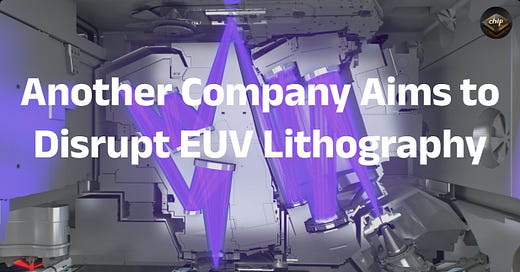Another Company Aims to Overturn EUV Lithography
New startups challenge ASML’s EUV dominance with particle accelerators, atomic lithography, and 3D printing for next-gen chips.
"ChipPub" Publication: 20% Discount Offer Link.
The EUV lithography machine developed by ASML is an indispensable tool for modern chip production. Especially as chip manufacturing processes have advanced to 3nm and beyond, the importance of EUV lithography has grown significantly. ASML has also led the transition into the High NA era by increasing the numerical aperture (NA) to meet the increasingly stringent demands of its customers.
However, EUV lithography machines face challenges such as manufacturing difficulties and high costs. This is why TSMC has been hesitant about adopting High NA EUV systems, which are valued at $4 trillion.
Over the past two years, several startups focusing on EUV lithography light sources have emerged, with the latest being a company called Inversion Semiconductor.
Disrupting with Particle Accelerators
Lithography is the process of using light to etch circuit patterns onto silicon wafers, making it the most critical step in chip manufacturing.
ASML dominates the advanced lithography machine market by generating 13.5-nanometer "EUV" light through the ejection of tin droplets and guiding the light to the wafer using mirrors. However, advanced chips increasingly demand finer circuit features. To improve resolution, ASML has increased the size of its mirrors, but this comes at the cost of significantly increased system complexity and expense.
In the next decade, ASML aims to achieve an EUV light source output power of 1 kilowatt with an input power of 1 megawatt. In contrast, Inversion Semiconductor aims to achieve a shorter-wavelength light source with an output power of 10 kilowatts. This would enable their light source to power multiple lithography machines, potentially generating billions of dollars in annual revenue growth for wafer fabs.




